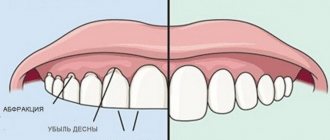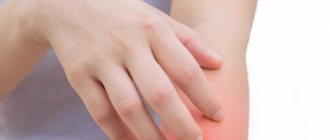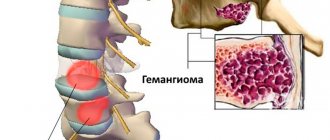With vitiligo, light spots with evenly defined edges form on the skin of the hands, face or entire body. The pathology is non-contagious and has the nature of a chronic disease that occurs for internal reasons. The disease can progress, that is, go through several stages in development and become more and more noticeable. The appearance of a person with vitiligo attracts the wary attention of others and often becomes a cause of psychological discomfort.
It is important to understand that vitiligo is not just a cosmetic skin defect. Pigmentation disorders can cause serious problems in the body that require attention and, without treatment, can lead to complications. You can consult a doctor for symptoms of vitiligo, undergo diagnostics and discuss treatment options with a specialist at the Medical Center on Botanichnaya.
What is vitiligo and how does this disease manifest itself?
The disease vitiligo is a disorder of the synthesis of melanin, the skin pigment. In some areas of the skin, the number of special cells - melanocytes, which give the skin its usual color, sharply decreases.
As a result, light beige, almost white spots of irregular shape are formed, which stand out sharply against the background of healthy skin and are separated from it by clear boundaries. The number and size of spots may vary depending on the stage of the disease.
Light areas appear:
- on the face;
- on the skin of the hands, most often on the elbows, wrists and backs of the hands;
- under the knees;
- in the armpit area;
- in the groin and other parts of the body.
Sometimes the disease also affects the scalp, and in men, the skin in the area where the beard and mustache grow.
Procedure protocol
Before starting therapy, all patients participating in the study signed informed consent for the “off label” procedure and permission to publish their photographs in scientific journals.
The course of mesotherapy procedures with NCTF135 consisted of 5 sessions, once a week. Emla cream was previously used as local anesthesia for patients for 30–45 minutes. Then, NCTF135 was administered in a volume of 3.0 ml intradermally, using a papular technique, at a distance of approximately 1.0 cm from each other (Fig. 5). A 30G × 13 mm needle was used for injections. The duration of the procedure was 15–20 minutes (excluding anesthesia time).
Stages and forms of vitiligo
There are several stages of vitiligo:
- Initial stage. The first light area on the skin appears and, in general, the pigmentation of the skin is disturbed.
- Progressive vitiligo. At this stage, the shade of the spots changes, the difference in the pigmentation of skin areas becomes more noticeable, and new light areas appear. This usually happens gradually over 3–4 months. But in 20% of cases, vitiligo develops at lightning speed.
- Stationary vitiligo . New spots no longer appear during this period and no significant changes occur in the condition of the skin. The shade of the affected areas may vary slightly, but within the established boundaries.
- Repigmentation . This is the improvement stage when light spots on the skin gradually regain their natural shade. It can occur as a result of effective treatment or with mild reversible forms of vitiligo (arising, for example, as a side effect after a procedure by a cosmetologist or taking medications).
There are also two forms of the disease depending on the size of the affected area. If light spots are located within one area on the body (for example, vitiligo on the face), they speak of a segmental form of the disease. If vitiligo affects almost the entire body, it is a generalized form.
“Of course, we’ll have to learn to live with it all over again.”
Daria, 31 years old
“I developed vitiligo 14 years ago. I was 17, I was entering my first year of college. It was not clear why it started - spots simply appeared on the thighs and began to grow. Now I even have vitiligo on my face, around my eyes.
The doctor told me that there is very little information about this disease. I bought some ointment at the pharmacy and tried to be treated with folk remedies, but then I stopped using anything - nothing helped.
Of course, complexes appeared. I cried, was very worried, and used foundation to cover it all up. Some ill-mannered classmates asked me: “Are you sunbathing with glasses on? What are your spots? Of course, I was embarrassed, I wanted to turn away, hide... It’s just this kind of situation: you live for 17 years with the same appearance, and then one day it changes not at all according to your wishes. Of course, you will have to learn to live with this again.
My boyfriend helped me accept myself. When I started communicating with him, he gave me the opportunity to believe that I was special, that there was nothing special about my spots. I posted my first photo with vitiligo on Instagram in 2021, when someone wrote to me in direct message: “What’s wrong with your face?” And I decided to post a photo without filters, without anything, and write that I have vitiligo and that it is not contagious. Many acquaintances, having seen the photo, wrote to me that they did not even notice my spots and did not pay attention to them. In general, everyone reacted adequately.
Now many people come to me with the same problem as me, especially those who have it recently: “You are such a cheerful girl, how do you cope? I’m depressed because of this...” I’m pleased that I’m sharing my experience: maybe it will help someone. And if they write to me something about some new treatment for vitiligo, I immediately close the dialogue. I have already accepted this fact and I don’t want to give myself unnecessary hope. Only time will help you accept yourself. “Reconcile” is not the right word here, just accept. It took me five years.
Causes of vitiligo
The causes of vitiligo are always internal: it is a non-infectious disease.
Factors that can trigger the development of the disease include:
- Heredity. Melanin deficiency can be congenital, and this increases the risk of vitiligo.
- Malfunctions of the immune system. In 1959, A. Lörincz suggested that some patients develop vitiligo due to autoimmune disorders, and today this is a scientifically accepted theory.
- Neuroendocrine causes are malfunctions of the adrenal glands, pituitary gland, ovaries, pancreas and other organs that produce hormones.
- Sun, thermal and chemical burns, skin injuries, as well as systematic ultraviolet irradiation without protective equipment with SPF.
- Gastroenterological diseases: disorders of the liver, stomach, intestines.
- Infectious diseases of a viral or bacterial nature (vitiligo can develop against a background of weakened immunity).
- Severe intoxication.
- Severe stress.
Although it has been proven that a predisposition to vitiligo is sometimes transmitted genetically, it is rare for a child to be born with this pathology. As a rule, vitiligo on the hands, face or body develops later: from 10 years to about 30 years of age.
Science has established the causes of vitiligo not so long ago, but the disease itself has been known since ancient times. The term “vitiligo” was first used by the ancient Roman physician Aulus Cornelius Celsus (1st century AD).
Introduction
Vitiligo
- one of the most common types of hypomelanosis. According to official data, it affects from 3 to 6% of the world's population (the largest number of cases was recorded in Asia and the Middle East). However, in recent years, it appears that the number of patients with vitiligo has been steadily increasing. Let us recall that dyschromia is manifested by spots of depigmentation due to the loss of the ability of certain areas of the skin to produce melanin. This is due to the absence of the enzyme tyrosinase in melanocytes, which stimulates the process of pigment formation. Due to the presence of a pronounced cosmetic defect, patients with vitiligo experience severe stress and psycho-emotional discomfort. This dictates to clinicians and researchers the need to find new ways to treat this disease.
Currently, the lack of a holistic concept of the pathogenesis of vitiligo makes it difficult to develop a unified approach to treatment and predict the clinical course of this disease. In a number of scientific studies of the pathogenesis of vitiligo, preference is given to various theories: genetic, neurogenic, autoimmune, theory of oxidative stress, etc. All these theories have been repeatedly confirmed experimentally, but scientists have not yet come to a consensus. In addition, there are also a number of provoking factors: exposure to UV radiation, psycho-emotional stress, changes in the state of the peripheral nervous system, etc.
Is vitiligo treatable?
Success in treating vitiligo depends on the causes of the disease.
If the pathology is genetic or appears as a result of incurable autoimmune disorders, it is often impossible to completely restore pigmentation. But well-chosen therapy will help stop the progression of vitiligo.
If the cause of vitiligo is reversible disorders in the functioning of internal organs, you need to start with their diagnosis and treatment. In this case, there is a chance for significant improvement.
In parallel with the treatment of the main internal problem, the doctor may prescribe procedures that affect the skin condition:
- a course of specially selected hormonal medications, as well as vitamin complexes;
- phototherapy;
- laser therapy;
- methods of hardware cosmetology: peelings, polishing, etc.;
- treatment with a UV lamp;
- skin whitening. This method does not directly treat vitiligo, but it reduces the contrast between light spots and pigmented areas;
- in rare cases, surgical intervention by transplanting healthy skin cells. This method is not always justified and has contraindications.
Cream Ideal legs - Coverderm
Ideal Legs Cream is a foundation that smooths out skin imperfections and evens out its color.
Foundation Ideal legs
- Waterproof, UV protection level - SPF 40.
- Dries in a few seconds and stays on the skin all day.
- Can be used on any skin type.
- Can be used every day
Application:
- Vitiligo
- Dark spots
- Acne
- Stretch marks, varicose veins
- Tattoos, bruises, burns
Composition: non-toxic dyes Shades:
Shades of Coverderm cream “Ideal legs”
Directions for use: Apply evenly to skin using fingers or a sponge. In these cases, we recommend using two shades:
- Vitiligo, psoriasis, acne, burns, freckles, rosacea. Before applying the main shade, soften the affected areas with shade No. 8.
- Pimples, bruises, tattoos. Apply shade #0 before your base color.
- Burns, stretch marks, scars. Fill the affected areas with shade No. 0 cream before applying the main shade.
If using two shades, cover the first layer with Kaverderm powder. Then apply the second shade. Contraindications: none identified. Special instructions: use two shades of cream to get an even color.
conclusions
Reviews about Coverderm foundation are generally negative. Those who have tried it note that the texture is too thick and has a mask effect. The choice is yours.
Psoralen
Psoralen is available in the form of an alcohol solution. The drug increases sensitivity to ultraviolet radiation, therefore it is used in PUVA therapy.
Psoralen solution
- Ingredients: psoralen - obtained from the plant Psoralea drupaceae; 70% alcohol.
- Manufacturer: no information.
- Contraindications: cataracts, gastric and duodenal ulcers, nephritis, liver cirrhosis, gastritis, hepatitis, hypersensitivity, diabetes mellitus, tuberculosis, blood diseases, tumors, diabetes mellitus, cachexia, hypothyroidism, thyrotoxicosis, CHF, arterial hypertension, multiple pigmentary disorders nevi.
Do not use for pregnant and lactating women, children under 5 years of age, people over 60 years of age.
- Price: 600 rub.
- Course of treatment: 3-3.5 months. If necessary, a repeat course is prescribed.
- Side effects: headache, dizziness, palpitations, cardialgia, dyspepsia, nausea, gastralgia. In case of an overdose of ultraviolet radiation - acute dermatitis (skin hyperemia, blisters).
- Doctors' opinions: psoralen is used to treat vitiligo as a drug that enhances the effect of ultraviolet radiation. For example, with PUVA therapy. Safety when used in the clinic is guaranteed by constant medical supervision.
Reviews from forums
The drug is useless to use separately from UV therapy. Look at reviews of the use of PUVA therapy.
Review of PUVA therapy by user MaSulKa from the provitiligo.com forum
conclusions
The drug is intended to enhance ultraviolet exposure and there is no point in using it separately. At the clinic, a qualified doctor will select the dose and will constantly monitor you. This is the only way to guarantee the safety of using psoralen.
Beroxan
Beroxan is a solution for external use. The drug increases sensitivity to ultraviolet radiation due to parsnips in the composition.
- Ingredients: parsnip (active ingredients - xanthoxin and bergapten).
- Manufacturer: no information
- Contraindications: cataracts, gastric and duodenal ulcers, nephritis, liver cirrhosis, gastritis, hepatitis, hypersensitivity, diabetes mellitus, tuberculosis, blood diseases, tumors, diabetes mellitus, cachexia, hypothyroidism, thyrotoxicosis, CHF, arterial hypertension, multiple pigmentary disorders nevi. Do not use for pregnant and lactating women, children under 5 years of age, people over 60 years of age.
- Price: no information.
- Course of treatment: 1-2.5 months. If necessary, repeat the course with a break of 1.5-2 months.
- Side effects: headache and dizziness; heartbeat; dyspepsia, nausea, gastralgia. Acute dermatitis due to an overdose of UV rays.
- Doctors' opinions: the drug is used in clinics as a photosensitizer - a substance that enhances the effect of UV rays.
Reviews from forums
The drug is not used separately; see reviews of PUVA therapy.
Review of PUVA therapy by user Gallina from the provitiligo.com forum
conclusions
Beroxan enhances the effects of ultraviolet radiation during PUVA therapy and is not used separately (not sold in pharmacies). The method gives results in 85% of cases, but has many contraindications and side effects. Consultation with a doctor is required here.
Why you need to contact the Mama Papa Ya clinic
Our clinic offers quality services at affordable prices:
- consultation with a qualified dermatologist familiar with modern methods of treating the disease;
- the opportunity to attend physical therapy;
- the use of non-traditional methods of treatment, such as acupuncture;
- the ability to treat family members of different ages;
- careful observation of a specialist for the effectiveness of treatment, if necessary, the use of additional methods.
Call our clinic by phone or make an appointment at a time convenient for you through the form on our website.
Reviews
Good clinic, good doctor!
Raisa Vasilievna can clearly and clearly explain what the problem is. If something is wrong, she speaks about everything directly, not in a veiled way, as other doctors sometimes do. I don’t regret that I ended up with her. Anna
I would like to express my gratitude to the staff of the clinic: Mom, Dad, and me. The clinic has a very friendly atmosphere, a very friendly and cheerful team and highly qualified specialists. Thank you very much! I wish your clinic prosperity.
Anonymous user
Today I had a mole removed on my face from dermatologist I.A. Kodareva. The doctor is very neat! Correct! Thanks a lot! Administrator Yulia Borshchevskaya is friendly and accurately fulfills her duties.
Belova E.M.
Today I was treated at the clinic, I was satisfied with the staff, as well as the gynecologist. Everyone treats patients with respect and attention. Many thanks to them and continued prosperity.
Anonymous user
The Mama Papa Ya clinic in Lyubertsy is very good. The team is friendly and responsive. I recommend this clinic to all my friends. Thanks to all doctors and administrators. I wish the clinic prosperity and many adequate clients.
Iratyev V.V.
We visited the “Mama Papa Ya” Clinic with our child. A consultation with a pediatric cardiologist was needed. I liked the clinic. Good service, doctors. There was no queue, everything was the same price.
Evgeniya
I liked the first visit. They examined me carefully, prescribed additional examinations, and gave me good recommendations. I will continue treatment further; I liked the conditions at the clinic.
Christina
The doctor carefully examined my husband, prescribed an ECG and made a preliminary diagnosis. She gave recommendations on our situation and ordered additional examination. No comments so far. Financial agreements have been met.
Marina Petrovna
I really liked the clinic. Helpful staff. I had an appointment with gynecologist E.A. Mikhailova. I was satisfied, there are more such doctors. Thank you!!!
Olga
Protopik
Protopic is a white or yellowish anti-inflammatory ointment for external use. The active ingredient is tacrolimus, an immune suppressant drug.
Protopic ointment 0.1%
- Ingredients: tacrolimus, liquid and white soft paraffin, white wax, solid paraffin.
- Manufacturer: Astellas Toyama Co. (Japan)
- Contraindications: pregnancy and lactation; Netherton's syndrome, generalized erythroderma, graft-versus-host disease (skin manifestations), lamellar ichthyosis; children under 2 years of age (0.03% ointment); children under 16 years of age (0.1% ointment); caution - with liver failure.
- Price: 1600 rub.
- Course of treatment: determined individually.
- Side effects: skin irritation - burning and itching sensation, paresthesia, pain, hyperemia and skin rash; increased risk of developing acne, folliculitis and herpetic infections.
- Special instructions: the ointment is intended for the treatment of atopic dermatitis, but is successfully used for the treatment of vitiligo here and in the West. Cannot be combined with ultraviolet treatment.
Reviews from forums
In combination with ultraviolet light, the drug gives results.
Review of ointment Protopik by user Iruska from the forum provitiligo.com
Review of ointment Protopik by user Zyf from the forum provitiligo.com
Review of ointment Protopik by user Iruska from the forum provitiligo.com Conclusions
conclusions
Due to its medical properties, Protopic ointment is not intended for the treatment of vitiligo. Despite this, some forums note the positive effect of using protopic. The cost of Protopic in Moscow pharmacies is 640-720 rubles. for 10 g
The instructions for the drug indicate to avoid UV rays. People's experience suggests the opposite - only in combination with the sun or artificial ultraviolet light does protopic produce results.
Be aware of these discrepancies and use the ointment with caution.
Psoberan
Psoberan is available in the form of ointment and solution. A drug of combined action, of plant origin, increases the body's sensitivity to ultraviolet radiation.
- Ingredients: bergapten and psoralen of plant origin (from fig leaves).
- Manufacturer: no information.
- Contraindications: do not use for children under 5 years of age, people over 60 years of age, or pregnant women. Exhaustion - cachexia; Acute diseases of the gastrointestinal tract; diseases of the central nervous system; hypertension; tuberculosis; blood diseases; diabetes; nephritis - acute and chronic.
- Price: not specified.
- Course of treatment: treatment is carried out in courses of 2-3 months. Duration of therapy is 10-12 months.
- Side effects: nausea, heaviness in the abdomen, diarrhea, headache, palpitations, insomnia and irritability, allergic rash. Redness, erythema, burns due to excessive exposure to UV rays.
- Doctors' opinions: Doctors use the drug in PUVA therapy.
Reviews from forums
Psoberan is not used as an independent remedy, but only in combination with ultraviolet radiation during PUVA therapy. Therefore, read in detail about this method and its effectiveness.
Review of PUVA therapy by user Katish from the provitiligo.com forum
conclusions
Psoberan belongs to a group of drugs that increase sensitivity to ultraviolet radiation. Self-medication with such means is not effective without special lamps. And without the constant supervision of a doctor it can be dangerous.










